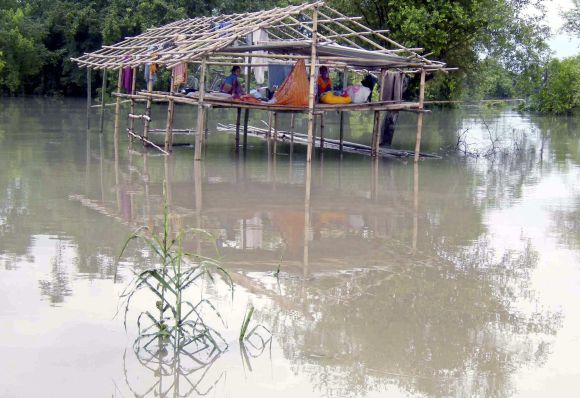 | « Back to article | Print this article |
Brahmaputra dries up Arunachal! China responsible?
The Siang (Brahmaputra) river originating from Tibet was suddenly found to have almost dried up at a town in Arunachal Pradesh, a state government spokesman said on Wednesday night.
People of century-old Pasighat town in East Siang district found that the water level of the river receded so much on Wednesday evening that it almost dried, Tako Dabi said.
Dabi, also the political advisor to Chief Minister Nabam Tuki, expressed apprehension that China could have diverted the water of the river, which is known as Yarlong Tsangpo in Tibet, or there could be some artificial blockade due to which this has happened.
Click here for more Realtime News on Sino-Indian ties!
Please click NEXT to read further...'The panic of the people cannot be simply brushed off'
On June 9, 2000, the water level of Siang rose suddenly by 30 m and inundated almost the entire township causing widespread destruction to property besides claiming seven lives following the collapse of a hydropower dam in Tibet, said Dabi, who himself inspected the dried bed of the river.
Dabi suggested that the Centre and its agencies like the Central Water Commission should immediately conduct a study in collaboration with the state government to find the crux of the problem.
The panic of the people cannot be simply brushed off, he said.
China's cascade hydropower dams a challenge
Yarlung Tsangpo, the highest river in the world, is a watercourse that originates at Tamlung Tso Lake in western Tibet, southeast of Mount Kailash and Lake Manasarovar.
It later forms the South Tibet Valley and Yarlung Tsangpo Grand Canyon, before entering India at Tuting in Arunachal as Siang, takes the name of Brahmaputra in Assam and enters Bangladesh and is known as Megna.
In the Upper Mekong Basin in Yunnan Province, China has planned to construct eight cascade hydropower dams, the first of which, the Manwan Dam, was completed in 1996.



